<< Previous | Displaying results 26-50 of 489 for "warsaw" | Next >>
A bridge connected areas of the Warsaw ghetto to prevent Jews from entering the streets that were not part of the ghetto. Before the ghetto was sealed, the few entrances and exits had checkpoints. In the early months of the ghetto, life had the appearance of normalcy, but very soon the lack of food and adequate housing began to take its toll.
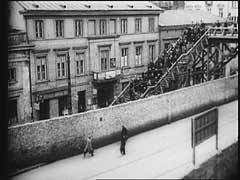
After the Germans established the Warsaw ghetto in October 1940, conditions deteriorated rapidly. The Germans strictly controlled the movement of goods into and out of the ghetto. There was not enough food to feed the ghetto residents. At great personal risk, many Jews attempted to smuggle in food. The German food ration for Warsaw ghetto inhabitants amounted to less than 10 percent of the ration for a German citizen. Thousands of Jew died in Warsaw each month because of starvation or disease.
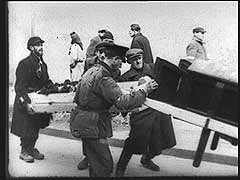
The Nazis sealed the Warsaw ghetto in mid-November 1940. German-induced overcrowding and food shortages led to an extremely high mortality rate in the ghetto. Almost 30 percent of the population of Warsaw was packed into 2.4 percent of the city's area. The Germans set a food ration for Jews at just 181 calories a day. By August 1941, more than 5,000 people a month succumbed to starvation and disease.
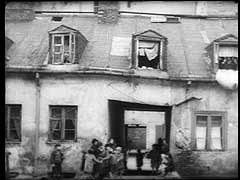
The Nazis sealed the Warsaw ghetto in mid-November 1940. German-induced overcrowding and food shortages led to an extremely high mortality rate in the ghetto. Almost 30 percent of the population of Warsaw was packed into 2.4 percent of the city's area. The Germans set a food ration for Jews at just 181 calories a day. By August 1941, more than 5,000 people a month succumbed to starvation and disease.
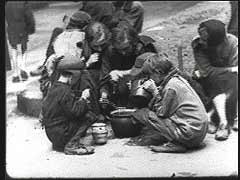
After the Germans established the Warsaw ghetto in 1940, the Jewish council in Warsaw became responsible for the full range of city services inside the ghetto area. In this German footage, prisoners from the ghetto's "Jewish prison" run into the courtyard and walk in circles during inspection.
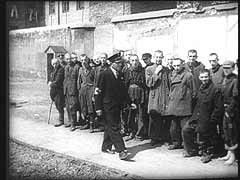
Germany invaded Poland on September 1, 1939, beginning World War II. German forces swiftly overran Polish border defenses and approached Warsaw, Poland's capital city. Warsaw suffered heavy air attacks and artillery bombardments during the campaign. The city surrendered on September 28. This footage shows German forces entering Warsaw amidst the destruction caused by their bombardment of the city.
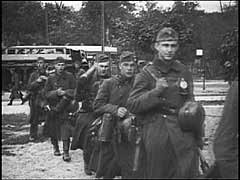
Germany invaded Poland on September 1, 1939. The Blitzkrieg ("lightning war") campaign in Poland was short and decisive. Warsaw, the capital of Poland, surrendered on September 27. In early October, Adolf Hitler visited Warsaw to review his forces. This footage shows victorious German army units parading before Hitler in the streets of the devastated city.
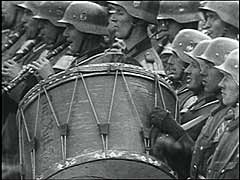



The city of Warsaw is the capital of Poland. Before World War II, Warsaw was the center of Jewish life and culture in Poland. Warsaw's prewar Jewish population of more than 350,000 constituted about 30 percent of the city's total population. The Warsaw Jewish community was the largest in both Poland and Europe, and was the second largest in the world, behind that of New York City. The Germans occupied Warsaw on September 29, 1939. In October 1940, the Germans ordered the establishment of a ghetto in…

Jews being deported from the Warsaw ghetto board a freight train. Warsaw, Poland, July-September 1942.
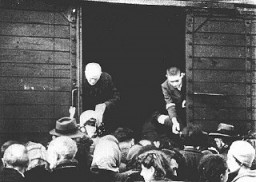
Deportation of Jewish women from the Warsaw ghetto. Poland, 1942-1943.
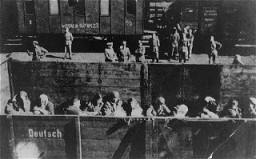
Ruins of the Warsaw ghetto after the Warsaw ghetto uprising. Poland, May 1943.
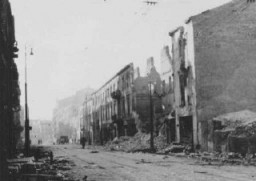
A meeting of the Warsaw ghetto Jewish council. Sitting behind table, 2nd to 4th from left: industrialist Abraham Gepner; chairman Adam Czerniakow; and lawyer Gustav Wielikowski. Warsaw, Poland, between 1939 and 1942.
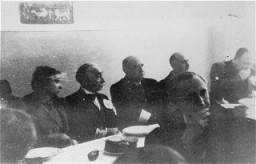
Deportation of Jews from the Warsaw ghetto. Jews from the ghetto board a deportation train with the assistance of Jewish police. Warsaw, Poland, 1943.
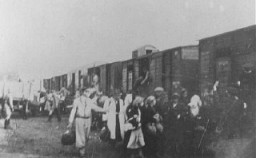
A bombed out home in Warsaw, the besieged capital of Poland. Only a chimney and a stove remain relatively intact. Photograph taken by Julien Bryan (1899-1974), a documentary filmmaker who filmed and photographed the everyday life and culture of individuals and communities in a variety of countries around the globe. In Warsaw following the German invasion of Poland, Bryan filmed and photographed the German bombardment and its impact on the Polish citizenry. He was able to leave during a brief truce that was…
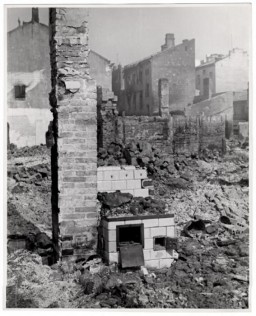


An emaciated child eats in the streets of the Warsaw ghetto. Warsaw, Poland, between 1940 and 1943.
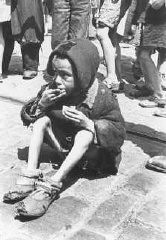
In the Warsaw ghetto, Jewish children with bowls of soup. Warsaw, Poland, ca. 1940. During the Holocaust, the creation of ghettos was a key step in the Nazi process of brutally separating, persecuting, and ultimately destroying Europe's Jews. Ghettos were often enclosed districts that isolated Jews from the non-Jewish population and from other Jewish communities.
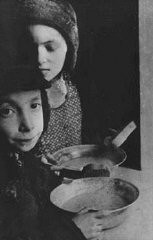
Street scene in the Warsaw ghetto. The sign at left announces: "Soup in the courtyard, first floor, apt. 47." Warsaw, Poland, 1940-1941.
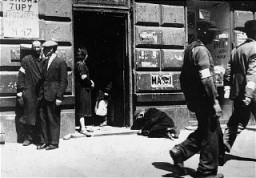
Entrance to the Warsaw ghetto. The sign states: "Epidemic Quarantine Area: Only Through Traffic is Permitted." Warsaw, Poland, February 1941.

A Polish policeman checks the papers of a Jewish resident of the Warsaw ghetto. Warsaw, Poland, February 1941.
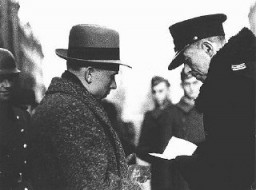
A Jewish man attempts to make a living by playing music on a gramophone, which he wheels around in an old baby carriage. Warsaw ghetto, Poland, wartime.
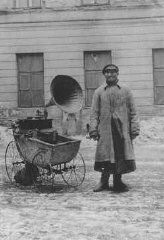
We would like to thank Crown Family Philanthropies, Abe and Ida Cooper Foundation, the Claims Conference, EVZ, and BMF for supporting the ongoing work to create content and resources for the Holocaust Encyclopedia. View the list of donor acknowledgement.